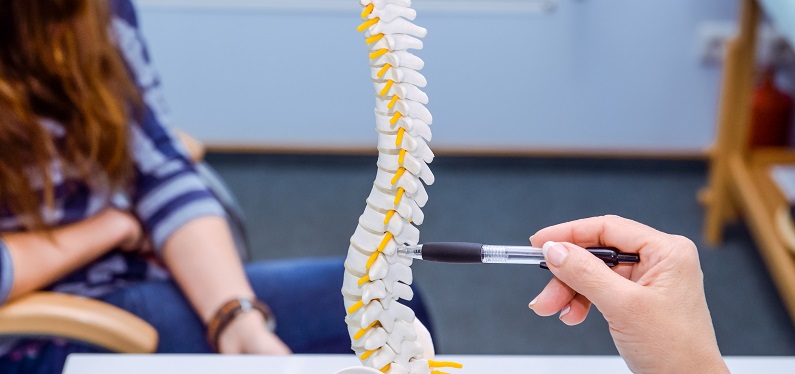Preventing & Treating Scarred Spinal Nerves
Category: Spine | Author: Stefano Sinicropi

After a significant trauma or in the wake of a surgery, your body responds by treating wound sites by forming scar tissue. This tissue is a little different than normal skin tissue in that it tends to be thicker and more fibrous. Because of this, when it forms around or near nerves, it can cause problems. Below, we take a closer look at scarred spinal nerves and how they are prevented and treated.
Scar Tissue And Spinal Nerves
Scar tissue isn’t all problematic when it forms in the spine after a surgery or significant wound. The presence of the tissue helps attach nearby nerves to other structures, allowing them to perform vital functions. However, this tissue formation can also inhibit blood flow and put pressure on the nerve. Also, because of the structure of scar tissue, it is more likely to pull on a spinal nerve as a person makes certain movements, and this nerve movement can lead to pain signals.
If you’re dealing with shooting pain, pain that goes in waves or pain that gets worse with certain movements after a surgical procedure on your spine, odds are you’re battling a scarred spinal nerve. However, in order to rule out an issue with the operation or any spinal hardware, your surgeon will want to conduct a diagnosis. Oftentimes this will involve an imaging test, like an X-ray, MRI or CT scan, and it may also require an electromyography, also known as a nerve test, to see which nerves are functioning or impacted in the area.
Once the affected nerve has been pinpointed, treatment is pretty straightforward. Your doctor will likely recommend non-operative treatments like medications or physical therapy to see if they’ll do the trick, and many times they provide much desired relief. But if conservative treatments fail, surgeons may recommend nerve stimulation or a minimally invasive operation to remove the problematic scar tissue.
Preventing Scarred Spinal Nerves
Ideally you’ll follow these prevention tips after your initial spinal operation, but these prevention tips can also come in handy for patients that need to have painful scar tissue removed in a secondary operation. The best prevention tip involves a range of physical therapy and exercise routines. Movement helps to break up scar tissue as it forms. This helps the tissue become more flexible and reduces its likelihood of entrapping nearby nerves. Daily physical therapy and a stretching/exercise routine is essential in the days and weeks after your operation to help healthy scar tissue form in the surgical site.
There’s not a lot else a patient can do to prevent scarred spinal nerves, so stick to your therapy routine and talk to your doctor at the first sign of a nerve problem. If you’re dealing with shooting or radiating pain in your spine or extremities after a surgical operation, there’s a good chance a spinal nerve issue has developed. Have the problem addressed before more nerve damage can occur.
For more information, or for help with your spinal nerve issue, reach out to Dr. Sinicropi’s office today.